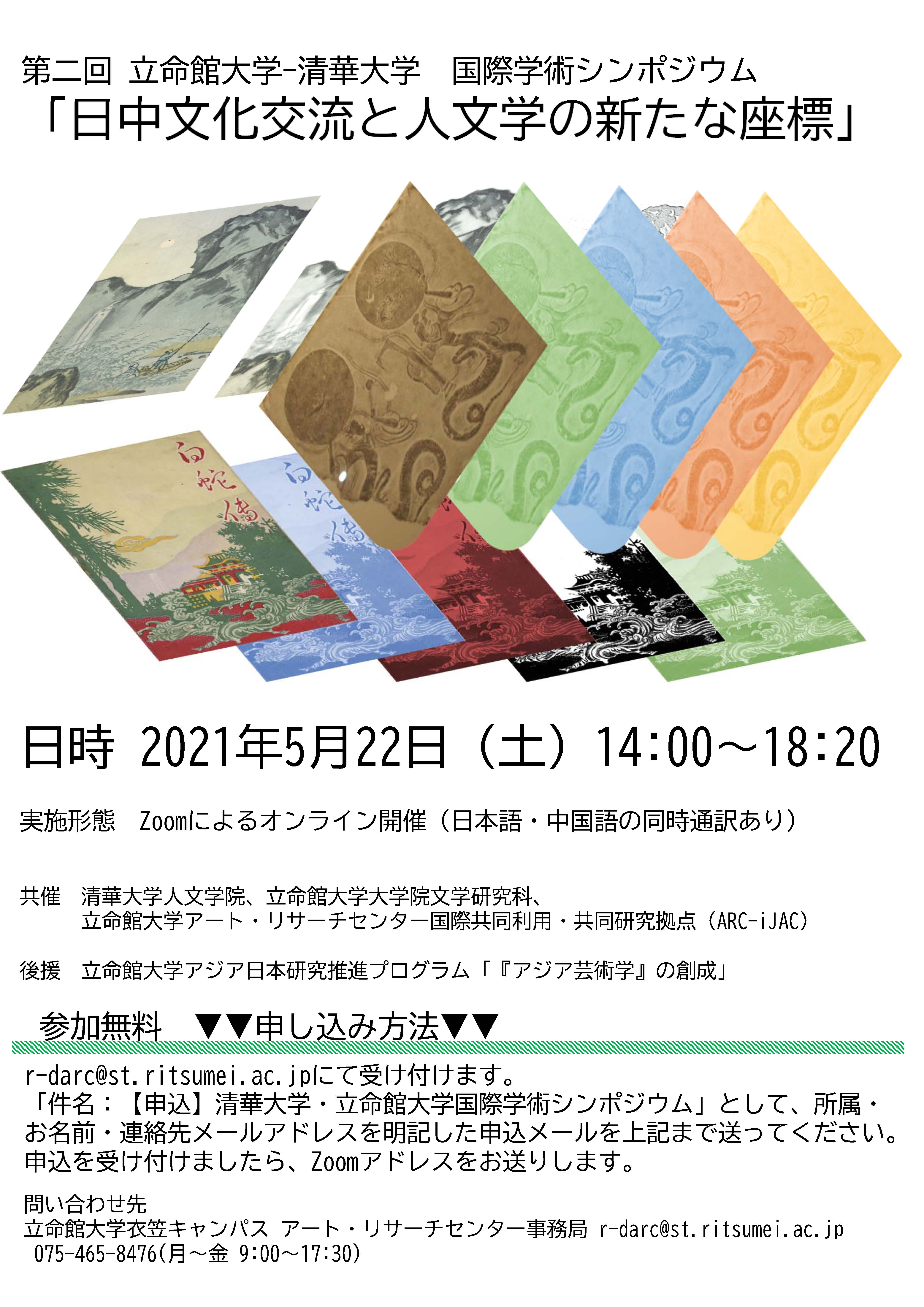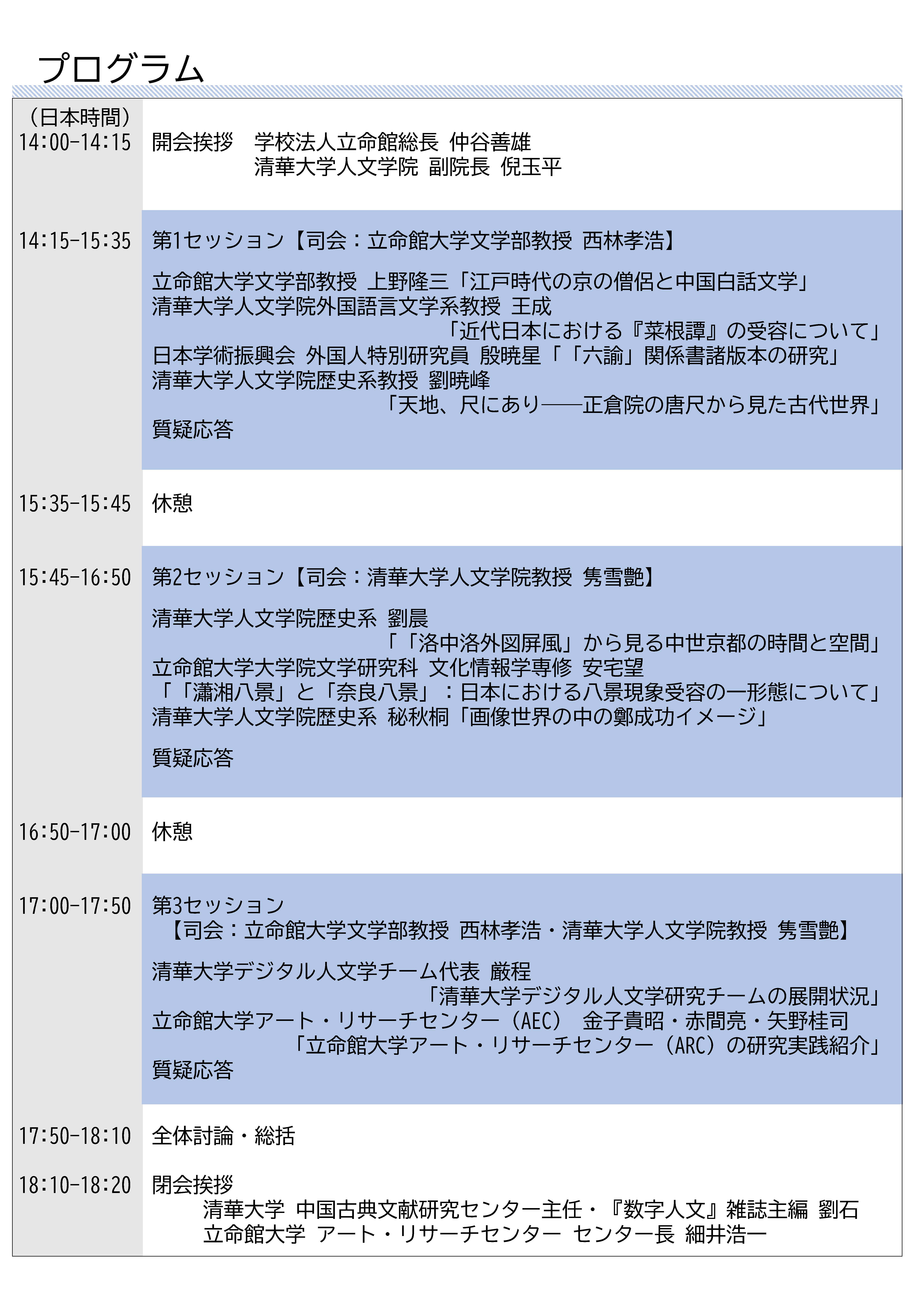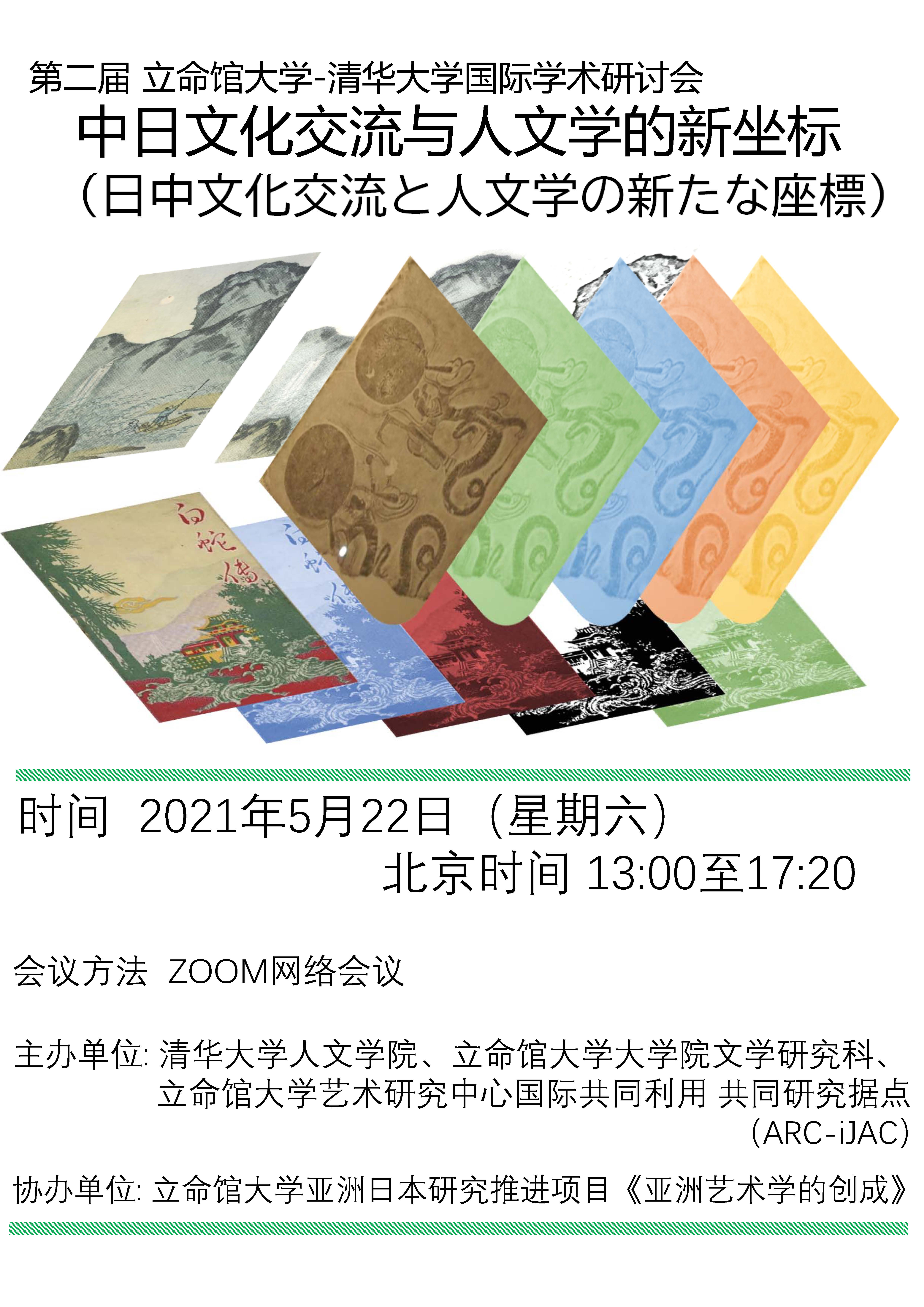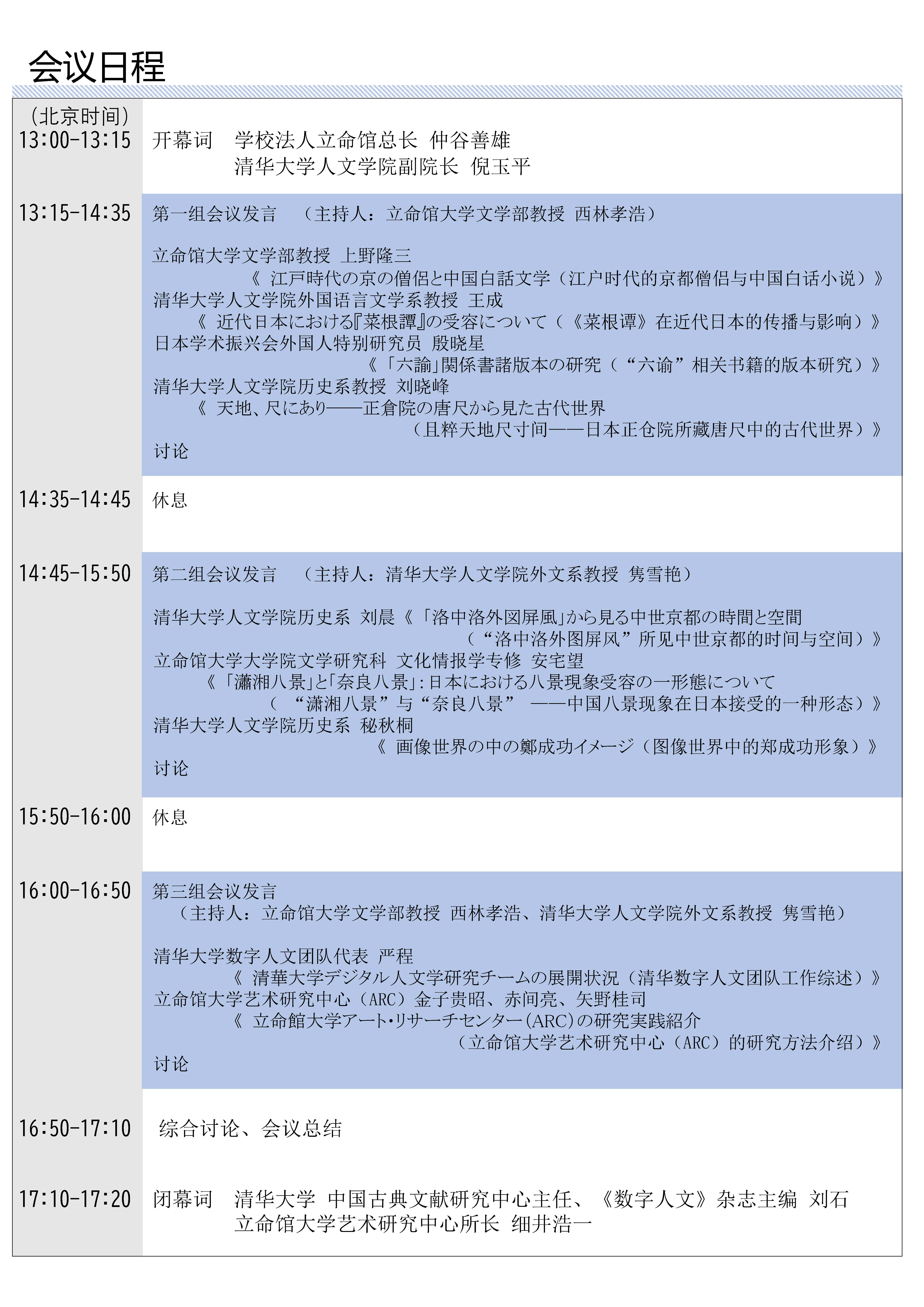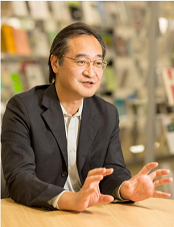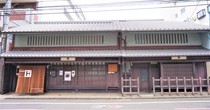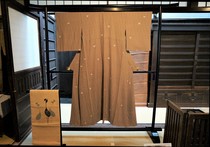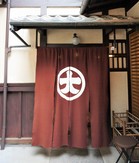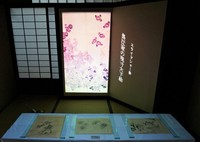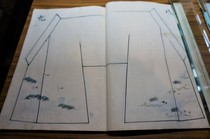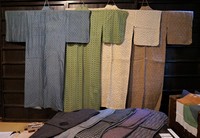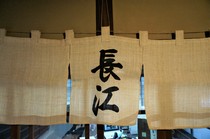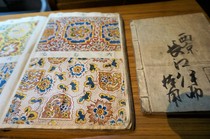-
 13
14
15
16
17
18
19
20
21
22
23
13
14
15
16
17
18
19
20
21
22
23
 [イベント情報]June 2, 2021(Wed)
[イベント情報]June 2, 2021(Wed)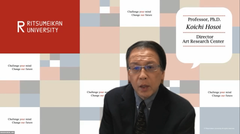 The 2nd Ritsumeikan University - Tsinghua University International Academic Symposium on Saturday, May 22, 2021, focused on Japan-China Cultural Exchange and New Coordinates for the Humanities.
The 2nd Ritsumeikan University - Tsinghua University International Academic Symposium on Saturday, May 22, 2021, focused on Japan-China Cultural Exchange and New Coordinates for the Humanities.The symposium was jointly organized by the School of Humanities, Tsinghua University, China, and the International Joint Digital Archiving Center for Japanese Art and Culture (ARC-iJAC), Art Research Center, Ritsumeikan University, supported by the Program for Asia-Japan Research Development Research on Creation and Development of Asian Arts Studies, Ritsumeikan University.
In his opening remarks, Professor Yoshio Nakatani--Chancellor of the Ritsumeikan Trust--stressed that the symposium was an excellent opportunity to promote research, academic exchange, and friendship with Tsinghua University and Chinese scholars.
Furthermore, Professor Yuping Ni--Associate Dean of the School of Humanities, Tsinghua University--expressed his hope to deepen the partnership and comprehensive cooperation between both universities, emphasizing the significance of humanities, besides natural sciences, in times of crisis and complex challenges such as the global pandemic.
During the symposium, research teams of both universities presented their perspectives and research activities in digital humanities.
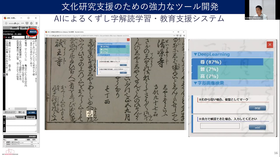
Professor Takaaki Kaneko introduced the ARC Model of Digital Archiving, the center's representative databases, and how its online research environment facilitates born-digital style research.
He also explained powerful tools developed by the ARC to aid digital humanities research, such as the educational transcription system with an AI-enabled deciphering support function for the Japanese cursive script known as kuzushiji.
Furthermore, Professor Keiji Yano introduced the construction of a WebGIS-based portal database of maps and a system to compare Rakuchū rakugai-zu byobu--folding screen paintings of scenes in and around Kyoto--with maps of the present and the past.
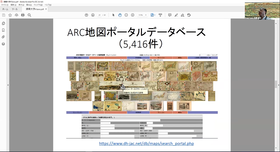 Concluding the symposium, Professor Koichi Hosoi--Director of the Art Research Center--expressed his anticipation for the birth of new international joint research styles on diverse topics fueled by digital technology as both universities join efforts in digital humanities research.
Concluding the symposium, Professor Koichi Hosoi--Director of the Art Research Center--expressed his anticipation for the birth of new international joint research styles on diverse topics fueled by digital technology as both universities join efforts in digital humanities research.Many people from Tsinghua University, Ritsumeikan University, and other universities and research institutions attended the symposium and engaged in lively discussions.
"I am very impressed that so many people are studying Japanese culture through databases and digital archives," commented Chancellor Nakatani on attending the symposium and expressed his anticipation for many new research findings to emerge from these archives.
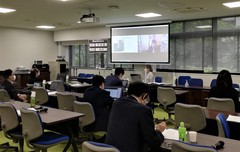 Professor Takahiro Nishibayashi, who led the planning and organization of the symposium, expressed his gratitude to all the speakers, participants, and staff involved. "Taking the humanities as a starting point, I strongly hope that research exchange between both universities will be further deepened and involve other fields such as digital humanities," said Professor Nishibayashi.
Professor Takahiro Nishibayashi, who led the planning and organization of the symposium, expressed his gratitude to all the speakers, participants, and staff involved. "Taking the humanities as a starting point, I strongly hope that research exchange between both universities will be further deepened and involve other fields such as digital humanities," said Professor Nishibayashi.The second joint academic symposium marked a meaningful occasion to reinforce the collaboration between both universities while highlighting the advance in humanities research on both sides with the progress in digital technology.
We look forward to further strengthening our partnership with Tsinghua University by expanding the scope of our research exchange to other research fields in the future.
*To prevent the spread of COVID-19, this event was held online via Zoom.
[イベント情報]May 26, 2021(Wed)The 85th International ARC Seminar will be held as a Webinar on Wednesday, May 26, starting at 18:00 JST.
The program is as follows:
1. Reorganization of the Nagae Family's Former Collection and its Future Prospect (「長江家旧蔵資料の再整理と今後の展望」)
Speaker: Hirotaka SATO (Assistant Professor, College of Letters, Ritsumeikan University)
2. A Yet Another Trial to Apply Deep Learning Technologies to the Digitized Images of the Databases of the Art Research Center Owned Materials (「アート・リサーチセンター所蔵資料データベースのデジタル化された画像に深層学習技術を適用する取り組み」)
Speaker: Biligsaikhan BATJARGAL (Senior Researcher, Kinugasa Research Organization, Ritsumeikan University)
- - - - - - - - - - - - - - - - - - - - - - - - - - - - - - - - - - - - - - - - - - - - - - - - - - - - - - - - - - - - - - - - -
Date: Wednesday, May 26, 2021 18:00 - 19:30 JST
Participation: Online via Zoom (free of charge)
*Please note that only the first part of this webinar will be broadcasted via YouTube.
[イベント情報]May 22, 2021(Sat)The Art Research Center (ARC) is pleased to announce that the 2nd Ritsumeikan University - Tsinghua University International Academic Symposium on Japan-China Cultural Exchange and New Coordinates for Humanities will be held on Saturday, May 22, 2021.
Date and time: May 22 (Saturday), 2021 14:00 - 18:20
Format: Online via Zoom (with simultaneous interpretation in Japanese and Chinese)
Organizer:
School of Humanities, Tsinghua University
Graduate School of Letters, Ritsumeikan University
International Joint Digital Archiving Center for Japanese Art and Culture (ARC-iJAC), Art Research Center, Ritsumeikan University
Supported by: Program for Asia-Japan Research Development "Research on Creation and Development of Asian Arts Studies", Ritsumeikan University
Participation: Free of charge
How to register: Please send us an e-mail with the subject line "「【申込】清華大学・立命館大学国際学術シンポジウム」" and your name, affiliation and e-mail address to:
We will send you the link for Zoom after we receive your application.
For inquiries, please contact:
Art Research Center, Kinugasa Campus, Ritsumeikan University.
Tel: 075-465-8476 (Mon-Fri 9:00-17:30)
Read more>>[イベント情報]May 14, 2021(Fri)Accredited by the Ministry of Education, Culture, Sports, Science and Technology (MEXT) as the International Joint Digital Archiving Center for Japanese Art and Culture (ARC-iJAC) in 2019, the Art Research Center at Ritsumeikan University is a leading hub for international joint research in Japanese art and culture with a focus on Digital Humanities.
As part of the ARC-iJAC research support activities, we are pleased to announce that we are going to hold a workshop and training course on deciphering early Japanese books written in Japanese cursive script (kuzushiji) using the ARC's Early Japanese Book Portal Database and transcription system, as well as to support projects aiming at deciphering early Japanese books.
The training course will be divided into the first and the second semester. The first semester will be focusing on basic knowledge of transcription and how to use the system, to enable students to obtain reading skills to some extent.
In the second semester, students at beginner and intermediate levels will transcribe literary works of their choice. Experienced staff will check the transcribed text and provide guidance through the system.
Furthermore, if you would like to use the transcription system as part of a research project with a specific theme, you are free to use the system after receiving instructions on how to use it.
All training is provided free of charge.
■ Registration
If you are interested in participating in our training course, please register by filling in our application form. (Applications will be closed when the maximum capacity is reached.)
Phase 1: Training Course for Beginners and Intermediate Levels
This is a training course for deciphering kuzushiji using the ARC transcription system. It is slightly different from other kuzushiji courses that teach you how to read as you will train your ability to decipher the script while reading by yourself.
Details of Implementation:
1. How to use the ARC transcription system + training using the system
2. Date and time: May 14 (Fri), May 28 (Fri), June 18 (Fri), 2021 / Session A (starts at 9:00 JST), Session B (starts at 21:00 JST) ⇒ Each session will last for 90 minutes.
3. Number of participants: 8 per session (Those who will start at the 3rd phase of the project will be accepted separately.)
4. Target group: Beginners to intermediate learners who want to be able to transcribe early Japanese books by themselves.
5. Materials for the beginner to intermediate level will be provided by the organizer.
⇒ Held online via Zoom using the ARC Early Japanese Book Portal DB (with transcription and support system)
※You may also sign up if you would like to learn how to use the system to start from Phase 3 immediately.
Phase 2: Hands-on Experience in the Transcription System for Beginners and Intermediate Level
Participants will select the literary works they wish to decipher individually and carry out the transcription using the ARC transcription system. Results will be corrected by our experienced staff.
Furthermore, we will provide answers for undeciphered characters using the ARC transcription guidance function.
Participants will be able to proceed with the reading while receiving feedback and suggestions.
Details of Implementation:
1. Please participate in Phase 1 to understand how to use the system.
2. Please register for an individual project to start with.
3. Implementation period: From late September 2021 to March 2022
4. Number of participants: Approximately 5, on an individual or group basis
5. Target group: Those who have attended Phase 1 of the course
⇒ After a general meeting via Zoom in late September, transcription and correction will be carried out using the ARC Early Japanese Book Portal DB.
Phase 3: Research Project-based Usage
A research group led by a researcher who is already able to read kuzushiji to some extent can proceed with the transcription for a specific purpose.
In addition to the ARC transcription system, transcription support system, search function for transcribed text (display of search results with context) and the storage system for modern translations that are currently in operation, a comprehensive digital text utilization system will be available, including functions for annotating and translating texts that have been created (in preparation for full-scale operation starting from fall 2021).
Details of Implementation:
1. In Phase 1, you can start your project after receiving training on how to use our system.
2. For any questions and concerns about the system, support is available from the Technical Support Board of the International Joint Digital Archiving Center for Japanese Art and Culture (ARC-iJAC).
3. Implementation period: From June 2021 onwards
4. To start with, please register for the project category D. International Joint Research to Utilize the Center's Facilities and Equipment of the ARC-iJAC.
5. Target group: Anyone whose project comprises a large amount of material to be transcribed and who wishes to create a text of the transcription in the ARC portal database is welcome to participate.
In charge of the training course: Ryo Akama and Nozomu Ataka
Read more>>[イベント情報]May 12, 2021(Wed)The 84th International ARC Seminar will be held as a Webinar on Wednesday, May 12, starting at 18:00 JST.
The program is as follows (20 minutes each, including 5 minutes for Q&A):
1. 18:00 - 18:20
Topic: Documenting Traditional Crafts in Kyoto: Focusing on 3D Photogrammetry of a Climbing Kiln
(京都の伝統工芸の記録―登り窯の3D写真測量を中心にー)Speaker: Masaaki KIDACHI (Professor, College of Letters, Ritsumeikan University)
2. 18:20 - 18:40
Topic: Candi Borobudur: Its Relief Styles (チャンディ・ボロブドゥール:浮彫の様式)
Speaker: Takahiro NISHIBAYASHI (Professor, College of Letters, Ritsumeikan University)
3. 18:40 - 19:00
Topic: Appeal Improvement for Cultural Assets Advertisement Following Scriptwriting Technique (脚本術に従った文化資産広告シナリオの訴求力向上)
Speaker: Hiromitsu SHIMAKAWA (Professor, College of Information Science & Engineering)
- - - - - - - - - - - - - - - - - - - - - - - - - - - - - - - - - - - - - - - - - - - - - - - - - - - - - - - - - - - - - - - - -
Date: Wednesday, May 12, 2021 18:00 - 19:30 JST
Participation: Online via Zoom (free of charge)
*Please note that this webinar will not be broadcasted via YouTube.
[イベント情報]April 28, 2021(Wed)The 83rd International ARC Seminar will be held as a Webinar on Wednesday, April 28, starting at 18:00 JST.
The program is as follows:
1. The Problem of Distance in Digital Art History: Using the ResearchSpace Knowledge system to capture research methods and thinking. (in English)
Speaker: Dominic Oldman (Head of ResearchSpace & Senior Curator, British Museum, UK)
Abstract: This paper describes a different approach to the use of digital technology and particularly data. This approach views computer systems not just as a way of publishing quantitative references and finding aids but also as environments for representing thinking, interpretations, and arguments. It will use examples from various projects, including the British Museum's Late Hokusai site. These examples show how principles of knowledge representation can be combined with humanities research methods to remove fragmentation and represent complex context. In doing so, ResearchSpace addresses the intellectual, as well as physical aspects, required to fully investigate and analyse research questions using digital tools.
2. Various Needs of Chinese Classics in East Asia / 東アジアにおける漢籍需要の多様性 (in Japanese)
Speaker: Riku TONO (Assistant Professor, Kinugasa Research Organization, Ritsumeikan University)
- - - - - - - - - - - - - - - - - - - - - - - - - - - - - - - - - - - - - -
Date: Wednesday, April 28, 2021 18:00 - 19:30 JST
Participation: online, free of charge (no reservation required)
*This Webinar is open to everyone, and non-ARC members are also invited to participate.
[イベント情報]April 27, 2021(Tue)Professor Ryo Akama (College of Letters, Ritsumeikan University)--Deputy Director of the Art Research Center--was a guest speaker in the academic exchange webinar Scenic Views and Supernatural Beings: New Themes in 19th-century Ukiyo-e Prints, held on April 20, 2021.
Together with Hollis Goodall, Curator of Japanese Art at the Los Angeles County Museum (LACMA) and advisor to Scripps College, Claremont, Professor Akama discussed new themes in the ukiyo-e prints (woodblock prints) of the 19th century, with particular focus on the growth in prints featuring demons, ghosts, monsters, and other supernatural creatures.This event was organized by JAPANHOUSE Los Angeles, a project of the Japanese Ministry of Foreign Affairs to showcase and foster awareness of Japanese culture.
Professor Akama constructed and manages the Art Research Center's extensive Ukiyo-e Portal Database that comprises over 560,000 ukiyo-e prints.
More than 400 people from 10 countries attended this webinar.
For more information, please visit the JAPANHOUSE Los Angeles website: https://www.japanhousela.com/events/scenic-views-and-supernatural-beings/.
 With the establishment of the International Joint Digital Archiving Center for Japanese Art and Culture (ARC-iJAC) in 2019, the Art Research Center strives to push the internationalization of research activities that transcend disciplines and geographic boundaries.
With the establishment of the International Joint Digital Archiving Center for Japanese Art and Culture (ARC-iJAC) in 2019, the Art Research Center strives to push the internationalization of research activities that transcend disciplines and geographic boundaries.



NEWS
 Since its establishment in 1998, the ARC has been publishing the bulletin every year in March with the purpose of widely publicizing the research activities and outcomes of the center's projects. >>Read the bulletin
Since its establishment in 1998, the ARC has been publishing the bulletin every year in March with the purpose of widely publicizing the research activities and outcomes of the center's projects. >>Read the bulletin
Interview with Prof. Takanobu Nishiura (College of Information Science and Engineering, Ritsumeikan University)  Furthermore, he introduces the concept of space-sharing through flexible audio spot technology.
Furthermore, he introduces the concept of space-sharing through flexible audio spot technology.
>> Read full interview The museum is home to the collections of Philipp Franz Balthasar von Siebold, Jan Cock Blomhoff (Head of the Dutch East India Company in Dejima), and others.
The museum is home to the collections of Philipp Franz Balthasar von Siebold, Jan Cock Blomhoff (Head of the Dutch East India Company in Dejima), and others.
The extensive collection of Japanese artifacts includes ukiyo-e prints, copperplate prints, and early Japanese books. >> Enter the database On March 22 & 21, the ARC co-organized a special exhibition at the Nagae Family Residence, a tangible cultural property designated by Kyoto City.
On March 22 & 21, the ARC co-organized a special exhibition at the Nagae Family Residence, a tangible cultural property designated by Kyoto City.
Items on display included kimonos, historical trading documents, and daily necessities from the Nagae family collection. They were made publicly available for the first time, providing a glimpse into the daily life and business of a kimono fabric wholesaler in the early Shōwa era. >>Read more
They were made publicly available for the first time, providing a glimpse into the daily life and business of a kimono fabric wholesaler in the early Shōwa era. >>Read moreDigital Archiving Project about Pre-war Theater Programs of the Kabuki-za, Tokyo, held by the Shochiku Otani Library  As part of this research project, adopted by the ARC-iJAC, the bound pre-war theater programs of the Kabuki-za are dismantled into single volumes to prepare them for digital photography which the ARC Studio has documented in the above video.
As part of this research project, adopted by the ARC-iJAC, the bound pre-war theater programs of the Kabuki-za are dismantled into single volumes to prepare them for digital photography which the ARC Studio has documented in the above video.
The digitized programs will be integrated into the Shochiku Otani Library's Shibai Banzuke Browsing System and made available online. >>Read moreFY2020 Annual Report Meeting of the ARC-iJAC & Program for Supporting Research Center Formation
& FY2021 ARC-iJAC Adopted Joint Research Projects Concluding the fiscal year, the FY2020 Annual Report Meeting was held on February 19 & 20, 2021 via Zoom and YouTube.
Concluding the fiscal year, the FY2020 Annual Report Meeting was held on February 19 & 20, 2021 via Zoom and YouTube.
Furthermore, we have announced the FY2021 Adopted Joint Research Projects of the ARC-iJAC.
FY2020 ARC-iJAC Project Spotlights
Background interview with Andrew Gerstle (Emeritus Professor, SOAS University of London, UK & Project Leader). >> Read more  Background interview with Akihiro Tsukamoto (Associate Professor, Tokushima Univ., Japan & Project Leader). >>Read more
Background interview with Akihiro Tsukamoto (Associate Professor, Tokushima Univ., Japan & Project Leader). >>Read more

Upcoming Events
Wednesday, April 28, 2021, 18:00-19:30
83rd International ARC Seminar (Webinar)
1. The Problem of Distance in Digital Art History: Using the ResearchSpace Knowledge system to capture research methods and thinking (in English) Abstract→
Speaker: Dominic Oldman
(Head of ResearchSpace & Senior Curator, British Museum, UK)
2. Various Needs of Chinese Classics in East Asia / 東アジアにおける漢籍需要の多様性 (in Japanese)
Speaker: Riku Tono
(Assistant Professor, Kinugasa Research Organization, RU)

Previous Issues:
Winter Newsletter 2020
Autumn Newsletter 2020
Summer Newsletter 2020
Spring Newsletter 2020view this email in your browser Copyright © 2021 Art Research Center, Ritsumeikan University. All rights reserved.
Our mailing address is:
56-1 Toji-in Kitamachi, Kita-ku, Kyoto 603-8577 JAPAN
Want to change how you receive these emails?
You can update your preferences or unsubscribe from this list.[イベント情報]April 14, 2021(Wed)Professor Gerstle, thank you for your time today.
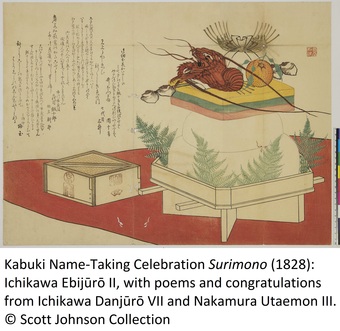
As the leader of the FY2020 ARC-iJAC project "Cultural Salons and the Visual Arts in Kyoto and Osaka, 1750-1900: Digitizing Kamigata Surimono and Paintings", could you please tell us the reason why you started this project?
Prof. Gerstle: I have been fascinated over the years by discovering how common it was in the Edo period for men and women of all ages and statuses to be active in cultural pursuits (遊芸) for pleasure.
I first realized this in researching gidayū amateur performance, where I found that until World War II gidayū as a hobby was popular all over Japan. I then saw how kabuki actors circulated among patrons and fans via haikai gatherings. Pursuit of the arts also importantly was a way for women as well to socialize outside their neighbourhood, and for individuals of different status (身分) to interact.
I still find it intriguing that individuals often had several pen names for their different activities. Under a pen name, everyone was nominally equal as a devotee of the particular art they were participating in. In contemporary Japan, we still see that it is common to socialize through cultural or other organized activities, like the clubs at university.
Read more>>[イベント情報]April 6, 2021(Tue)The Art Research Center (ARC) co-organized the special exhibition Kimono no Mushiboshi (「着物の虫干し展」) at the Nagae Family Residence, a tangible cultural property designated by Kyoto City, on March 20 and 21, 2021.
Due to COVID-19, this was the first time since the byobu matsuri (folding screen festival) in summer 2019 that the residence was open again to the public, and it welcomed a total of 50 visitors.
About the Event
The Nagae family were merchants of the kimono fabric, and their family residence served as both a working and living space for many generations.
During this exhibition at the residence, kimonos from the family collection were taken from the storehouse and air-dried--a traditional Japanese practice called mushiboshi--to prevent the clothes from insects and mold.
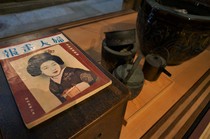
These kimonos were worn by the seventh generation of the Nagae family during the early Shōwa period. The head of the seventh generation was very fond of the Gion Festival, participating in the festival's preservation society and as a musician for the Gion bayashi (orchestral music accompanying the festival). He wore the summer haori on display to attend various events of the Gion Festival.
Furthermore, tools, goods, and trading documents were exhibited, providing a glimpse into the daily life and business of a merchant family in the rakuchu (in the capital) of that time.
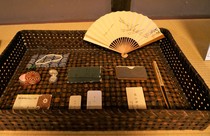
The items from the family collection displayed at this event were made available to the public for the first time after they had remained in the storehouse for a long time.
In a separate room, visitors could learn about the ARC's research outcomes in digital-archiving the Nagae family collection.
About the Nagae Family Residence
Designated as a tangible cultural property by the City of Kyoto, the Nagae Family Residence was built between the late Edo period and the Taishō period and is located in the center of Kyoto.
The main building is a two-story traditional wooden townhouse--also referred to as kyo-machiya--which consists of a north wing constructed in 1868 (closed to the public) and a south wing constructed in 1905.
Although some parts of the building have been restored in recent years, most parts of the residence, including the glass windows, remain the same as built more than a century ago.
With the office space at the front and private rooms at the back, including one for ceremonial occasions, each room had a clearly defined function.
Furthermore, a family business trademark is found throughout the residence that differs from the kamon (family crest) printed on their kimonos for the Gion Festival.
About the ARC's Research
The ARC has been involved in the research on the Nagae Family Residence for many years. After receiving a donation of their collection, including hanging scrolls, folding screens, kimonos, and daily life tools, we have been researching and digital-archiving those items.
In recent years, some kimonos and design pattern books have been discovered in the storehouse, revealing new aspects of the Nagae family's business as kimono fabric merchants. We also introduced these new findings at this exhibition.
In the future, the ARC strives to continue to research and digital-archive the remaining items in the storehouse to enrich the Nagae family collection database and preserve Japanese cultural heritage.
Nagae Family Residence Links: Official Website Facebook Page Instagram
___________________
Organizer: Hoosiers Corporation
Co-organizer: Art Research Center, Ritsumeikan University
 13
14
15
16
17
18
19
20
21
22
23
13
14
15
16
17
18
19
20
21
22
23



